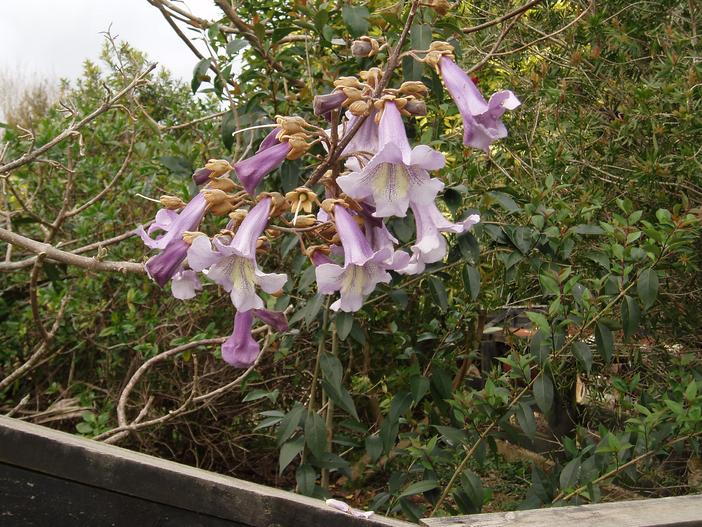Empress Tree
(Paulownia elongata)
Empress Tree (Paulownia elongata)
/
/

C E Ecroyd
CC BY 4.0
Image By:
C E Ecroyd
Recorded By:
Copyright:
CC BY 4.0
Copyright Notice:
Photo by: C E Ecroyd | License Type: CC BY 4.0 | License URL: https://creativecommons.org/licenses/by/4.0 | Uploader: Fæ | Publisher: Wikipedia Commons












Estimated Native Range
Summary
Paulownia elongata, commonly known as Empress Tree, is a deciduous tree native to open woodlands and forest edges in East Asia. It is renowned for its rapid growth rate, often cited as the fastest-growing hardwood tree. The Empress Tree can reach heights of up to 49-82 feet (15-25 meters) with a canopy spread of 30-50 feet (9-15 meters). Its leaves are very large, heart-shaped, and pubescent, creating a bold texture in the landscape. The tree produces showy, fragrant, purple flowers in the spring before the leaves emerge, adding to its ornamental value. The flowers are followed by woody seed capsules that persist into winter.
The Empress Tree is valued for its quick establishment and beautiful spring blooms, making it a popular choice for urban planting, large gardens, and parks. It is also used for reforestation and biomass production due to its rapid growth. While it prefers full sun, it can tolerate partial shade and requires medium to high amounts of water, thriving in well-drained soils. Despite its benefits, gardeners should be cautious as it can become invasive outside its native range and may cause ecological disruptions. It is also susceptible to breakage from strong winds due to its rapid growth and soft wood.CC BY-SA 4.0
The Empress Tree is valued for its quick establishment and beautiful spring blooms, making it a popular choice for urban planting, large gardens, and parks. It is also used for reforestation and biomass production due to its rapid growth. While it prefers full sun, it can tolerate partial shade and requires medium to high amounts of water, thriving in well-drained soils. Despite its benefits, gardeners should be cautious as it can become invasive outside its native range and may cause ecological disruptions. It is also susceptible to breakage from strong winds due to its rapid growth and soft wood.CC BY-SA 4.0
Plant Description
- Plant Type: Tree
- Height: 30-40 feet
- Width: 20-25 feet
- Growth Rate: Rapid
- Flower Color: Purple
- Flowering Season: Spring
- Leaf Retention: Deciduous
Growth Requirements
- Sun: Full Sun
- Water: Medium, High
- Drainage: Fast
Common Uses
Bee Garden, Bird Garden, Butterfly Garden, Fragrant, Hummingbird Garden, Low Maintenance, Showy Flowers
Natural Habitat
Open woodlands and forest edges in East Asia
Other Names
Common Names: Elongate Paulownia, Paulownia
Scientific Names: , Paulownia elongata,
GBIF Accepted Name: Paulownia elongata S.Y.Hu